Lewis & Clark: The Expedition Board Game Review!
May 21, 2014 by loudmouthman
They say you should never judge a book by its cover; those who share a long love affair with Boardgaming will appreciate that the idiom for books certainly holds true for board gaming. No better example can be given than offer up a review of Lewis & Clark: The Expedition. This was a game whose box art lead me to overlook the game. I considered that it might possibly be too thematic a game with a rule book whose word count might give Peter Jackson's The Hobbit a run for its money. Let me be clear then; I was wrong. I was wrong about the game mechanics, the rule book, and the game play. Now that I have played through the game several times and become an owner of said game I am a believer.
Time For An Adventure!
The box art which so easily dissuaded me is glorious and the attention to detail in the historical themes is carried into the names written on every character card available as resources gathering tool within the game. The historical theme refers to a moment of American History; 'The Corps of Discovery Expedition' and it is the first to have charted a course from what was then the western point of the then United States through French owned Louisiana and across unknown northern territories. America as a land may have a youthful history but it has created has been told in exploration, discovery, negotiation and economics. There is a excellent summary of the games history for this expedition and the characters who played their parts. For the history enthusiast its a pleasure to read; at which point everyone who drew their conclusions about the game immediately thinks 'not for me' and clicks away; DONT!
At its heart Lewis & Clark: The expedition is a racing game. Players compete to ensure that their base camps progress along the river and over mountains in a race that takes them from St Louis in the east to Fort Clatsop in the west. Progress along the track is measured by the players scout and the scouts ability to move forward is determined by the resources in hand or those in play at the time. A scouts movement is determined by canoes and horses and those resources are available by trading in other resources such as Wood, Fur, Equipment, Food, negotiations with the natives or playing a character card. As your resources are gathered and played there will soon be a need to setup camp. In doing so the player pays a penalty for any resources which have gone unused; thus there scout may fall backwards on the track. Whilst the scout may move up and down the rivers and mountains the base camp only moves forwards on the board ensuring that there is an eventual end to the game.
Turning to consider the game components and build quality. The core board represents the largely explored area of the now known United States. The main component of the board is the 'Village' in which natives are recruited or placed through actions determined by the players. The main track detailing the river and mountains course is drawn thematically along the top of the village map. Additional resource piles are placed above this. To the right of the board sits the recruitment ladder into which additional character cards are revealed from the bank of characters. These move down the ladder as purchases are made. Each player begins with their own board which represents the boats and rafts available to expedition. Additional play areas can be traded to bring more boats, canoes and rafts on which the player can store resources within a turn.
Each player begins with starting hand of 6 Characters whilst all the starting cards offer the same resource collecting skills the names and art are different for each. The cards are double sided. One side detailing at characters name and the resources they will enable for that player additionally each card represents a resource that will then become available to other adjoining players. The flipside of the card details the level of influence, referred to as Strength, which this character contributes. To play a character card a player must either use an additional card in their hand, or a native from their pool of resources. As you can see playing one character to provide influence to another will remove your choices in the remaining turns.
Each level or influence, strength, added to a played character represents the amount of times the action defined on their card can be played. So players with many fur in their resources might play a character which allows fur to be traded for movement up the river. Playing this with another character who adds two 'Indian' strength to the played card and adding to it a further Indian from their resource allows them to spend 1 Fur for 2 moves up the river and to do this three times. Unless otherwise stated cards features are exhausted but they provide a resource to other players whilst in play. Again the balance of putting cards in play is that you may be creating a resource that benefits another player.
Native Indians are recruited from the village by way of at least one of your starting character cards and in doing so the options are opened to trade within the village for resources or to strengthen the influence of a card. There are a limited number of Indians available in the game. The balance of keeping them in resource versus spending them in the village or with characters will have the player looking ahead to when they have to make camp.
In their turn the player will be required to play one of two compulsory actions; they must play a card strengthened by other characters or natives or else they must play a native into the village. Additionally, and at any point in their turn, a player can recruit a new character to their team as well as set up their base camp. Providing that their scout is ahead of their current base camp location it moves along the track. Every players turn consists of a limited set of actions but an complex series of choices which may benefit other players than themselves.
The setting up of base camp requires players to balance their resource collection along with utilizing their team. Any cards in hand, unwanted resources, or natives in connection with the player, can subtract from the scouts progress and set the scout backwards on the track. However, once the movement of the scout is resolved, the resolution of setting up base camp is that the exhausted cards are returned to the players hand.
So there you have a fairly straight forward process for each player to choose to risk and collect, or race and exhaust, their resources whilst hoping to maintain a working advantage in characters recruited. The game suggests 30 minutes per player but I feel a realistic measure here is around 45 minutes per player in the game.
If it suffers from anything it is the potential lock out of ending up too far behind in a race through the mountains. Whilst you might engineer a way to scupper an opposing players move through holding back resources or collecting Indians the balance of the game is such that you are more often penalised in doing so than your opponents.
The game mechanics are balanced and the race aspects of the game feel thematic and will invest the player who is of a mind to consider resource management and turn handling. It will certainly see some gamers pulling teeth in their frustration at the lack of effective player interaction.
Component and artwork wise the game, now in print from Asmodee, is on a par with their previous works and the attention to detail in the artwork and purpose of each of the character cards within the game are distracting enough for the History buff to spend sometime just browsing the histories in the names provided. The card stock is solid but there may be a desire to sleeve each card as their is a far bit of card scrape and slide within the game process. The tiny hexagonal wooden pieces representing the resources are clearly enough coloured but it will take new players a while to get used to the concept of Pink for Food, Yellow for Fur, White for Horses and Blue for Canoes.Its a small niggle but one that still creates a moment or two of confusion as resources are traded against characters or the village.
What's The Verdict?
Lewis & Clark: The Expedition is a thoughtful, thematically lustrous game with a Historic depth and a balanced resource mechanism to keep the game fresh after multiple play throughs. Granted this is no casual game played out within 90 minutes but it is a game which delivers a sense of accomplishment when a hand is played which trades carefully curated resources and delivers them as movement and progress.
If you do get a chance to sit and experience Lewis & Clark: The Expedition then make time to experience it and discover a quality of gameplay that takes a different pace from the usual dungeon delving , zombie slashing games which occupy your friendly local game store shelves.
If you would like to write an article for Beasts of War then please contact me at [email protected]!
"Lewis & Clark: The Expedition is a thoughtful, thematically lustrous game with a Historic depth"
Supported by (Turn Off)
Supported by (Turn Off)
Supported by (Turn Off)
































![Very Cool! Make Your Own Star Wars: Legion Imperial Agent & Officer | Review [7 Days Early Access]](https://images.beastsofwar.com/2025/12/Star-Wars-Imperial-Agent-_-Officer-coverimage-V3-225-127.jpg)


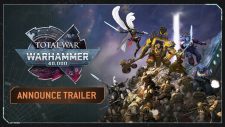





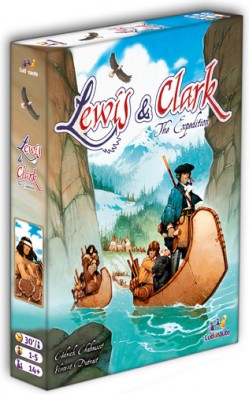
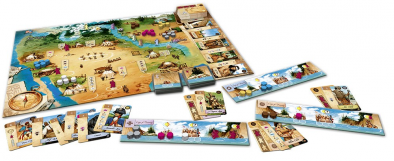
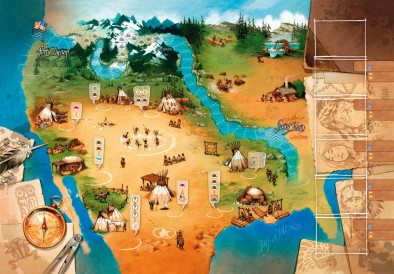

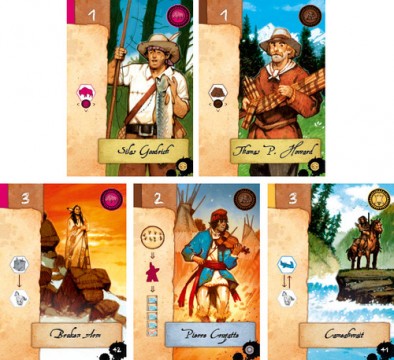
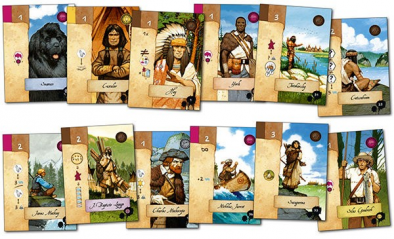
































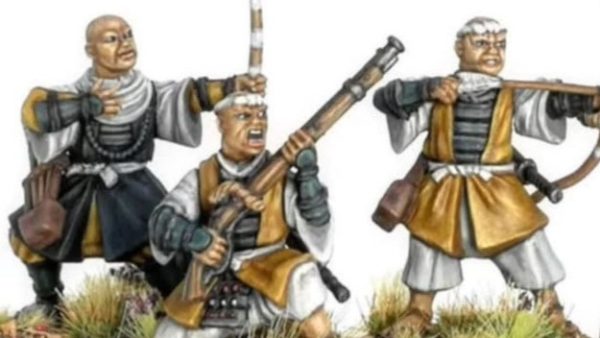
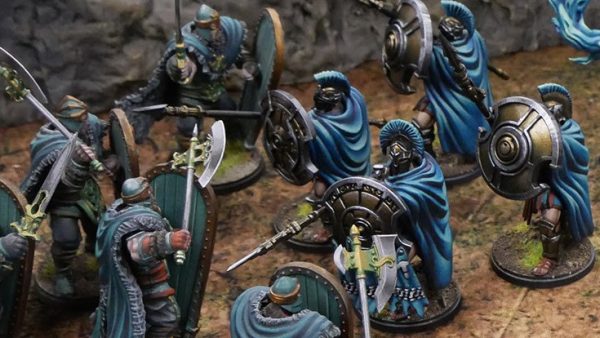
Nothing to do with Superman then? I’m out.
;D
Wow, this game actually looks very interesting. I might even be able to get my Dad into this, he comes from Montana (“out west”) and Lewis and Clark passed right by where he grew up. I see what you mean about the box art, it looks a *little* cartoony. And the map board actually shows a Northwest Passage? There’s no American here that even comes close to following this course . . . unless that’s supposed to be the Missouri River, in which case they’ve taken some artistic license. 🙂
Not usually a board game guy but this looks like it might definitely be worth a look.
So many good board games out there at the moment. Check out Board Game Geek’s Hotness list for some of the most awesome games 🙂
Start right at the top and get Twilight Struggle. A fantastic game which thoroughly deserves its #1 ranking.
Sorry, everyone . . . my post was supposed to say “. . . no American RIVER that comes close . . .”
My son and I played Oregon Trail in the early 80s when it first came out on PC. So, I will just have to check out the LC Game when he visits us this weekend.
In the meantime, here is an idea for all you boardgamers who want to get into the spirit of the World Cup starting in 21 days…..check out KickShot Soccer Board Game, http://www.kickshot.org. It is a light to medium game play, easy to learn.
Aziz Makhani
Creator of KickShot Soccer Board Game
Moscow, Idaho
Its beautiful illustarted
“Historic depth” eh? Are there cards for how many Native Americans you murder just like how States were given quotas for Native scalps? Are there points given for how many Native Americans you displace through forced ethnic cleansing? This may be a “fun” game, but it only serves the American national rhetorical myth that “expansion West was one of adventure and exploration” rather than physical conquest of many other nations.
Agreed. Also, I worry that it is apparently such a turn off for folks that a game might possess historical depth and accuracy…
“…wargamers, being a group of above average in intelligence and endeavour…”
Donald Featherstone
Does that still hold? 😉
By pure chance I happened to watch the Shut Up & Sit Down review of L&C the other day and it had a much more negative reception. They praised the design & theme of the game but the mechanics let it down. To them it came across as a race where the player in the lead would pull ahead and the other players would have to grind out the game without any hope of catching up – http://www.shutupandsitdown.com/blog/post/review-lewis-clark/